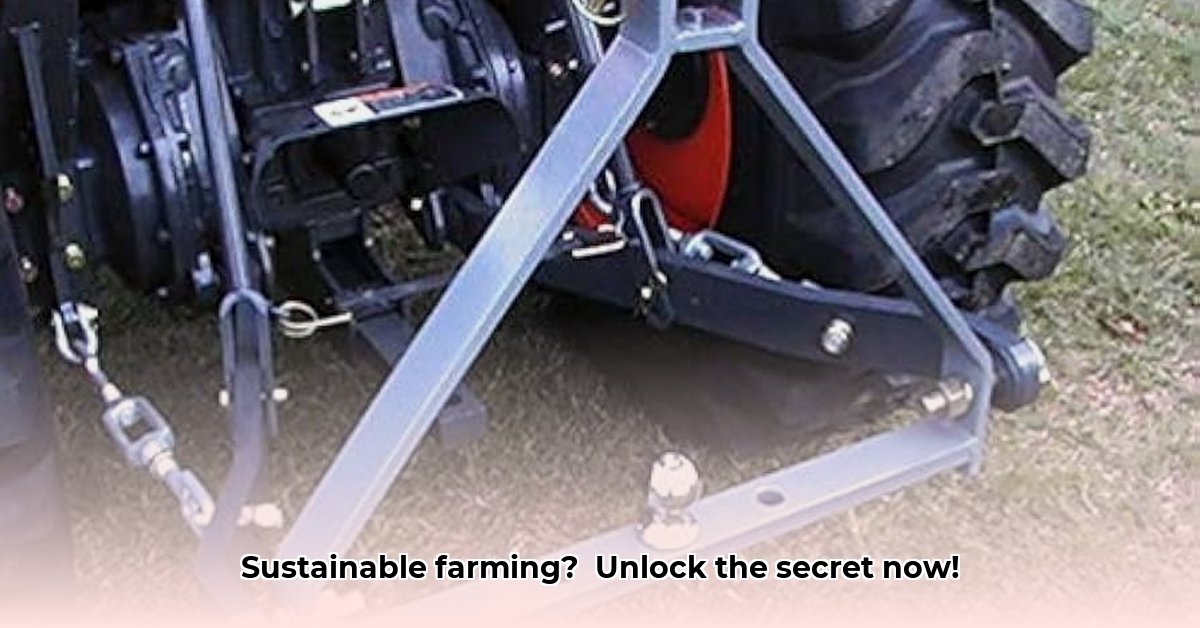
Understanding Drawbar Accessories and Their Role in Sustainable Agriculture
Sustainable farming practices are increasingly critical. Optimizing tractor implement integration is a key component of this shift, and drawbar accessories play a crucial role. These accessories aren't merely add-ons; they're the essential connectors between your tractor and implements, significantly impacting efficiency and environmental responsibility. Properly utilizing these accessories leads to reduced fuel consumption, minimized soil compaction, and ultimately, a smaller carbon footprint. But how can farmers get the most out of them? For more on specialized hitches, check out this resource on pintle hitches.
Different drawbar accessories serve unique purposes:
- Drawbars: The fundamental connection point, linking your tractor to the implement.
- Hitches: Various connection mechanisms, each designed for specific implement weights and types. Choosing the right hitch is paramount for safe and efficient operation.
- Stabilizers: Enhance implement stability, preventing swaying, especially with heavier equipment. They improve both safety and operational efficiency.
- Adapters: Facilitate compatibility between tractors and implements from different manufacturers, maximizing equipment utilization.
Efficient drawbar integration is pivotal for various farming operations, from plowing and planting to harvesting. The correct accessory selection ensures optimal implement function, minimizing energy waste and maximizing productivity. Isn't maximizing efficiency and environmental sustainability a major goal for modern farmers?
A Practical Guide to Selecting and Using Drawbar Accessories
Selecting and using drawbar accessories correctly is crucial for maximizing efficiency and sustainability. This section provides a step-by-step guide to ensure the best results.
Checklist for Choosing Compatible Accessories:
Weight Capacity: Always verify the accessory's weight capacity exceeds the implement's weight to prevent overloading and potential accidents. Overloading can lead to catastrophic equipment failure and injury.
Hitch Type: Ensure perfect compatibility between your tractor's hitch and the implement's attachment point. Incompatible hitches compromise safety and efficiency.
Safety Features: Prioritize accessories with built-in safety features like locking mechanisms and breakaway pins to prevent accidents. Safety should always be the top priority when working with heavy machinery.
Ease of Use: Consider the ease of mounting and dismounting. Frequent attachment and detachment mean ease of use directly translates into time savings.
Step-by-Step Guide to Installing a Drawbar Accessory (Example):
Preparation: Consult your tractor's manual, gather necessary tools, and ensure a level, obstruction-free working area. Thorough preparation minimizes the risk of mistakes and accidents.
Secure Connection: Attach the drawbar to the designated mounting points on your tractor, adhering strictly to the manufacturer's instructions.
Tightening and Securing: Employ the correct bolts, pins, or other hardware to firmly secure the drawbar. Improperly tightened connections result in instability and increased risk.
Pre-Operational Check: Before use, gently move the implement to confirm stability and proper functionality.
Troubleshooting Common Problems:
| Problem | Solution |
|---|---|
| Excessive Implement Swaying | Check stabilizer bars, hitch adjustments, and weight distribution. |
| Hitch Failure | Inspect for damage, replace worn parts, and carefully follow instructions. |
| Difficulty Mounting | Double-check compatibility, use correct tools, and review installation guides. |
The Future of Tractor Implement Integration
The future of farming hinges on advancements in technology and improved collaboration. Standardized interfaces will simplify implement changes, streamlining workflows and boosting efficiency. Precision agriculture and automation will further enhance operational precision and reduce resource consumption. This collaborative effort – involving manufacturers, technology developers, and policymakers – is vital for creating a sustainable and efficient agricultural future. The integration of smart sensors and automation promises a future where tractors autonomously adjust to the specific needs of each implement, thereby optimizing performance in real-time. This represents a significant advancement in the quest for sustainable and efficient farming practices.
"The integration of technology into farm machinery will revolutionize how farmers operate," says Dr. Anya Sharma, Agricultural Engineering Professor at the University of California, Davis. "Standardization will play a critical role in making this transition smooth and efficient."
This evolution is not merely about technological advancement; it's about fostering collaboration between stakeholders to create a more resilient and sustainable agricultural system. The future of farming depends on embracing these advancements and working together towards a more efficient and environmentally responsible agricultural landscape.